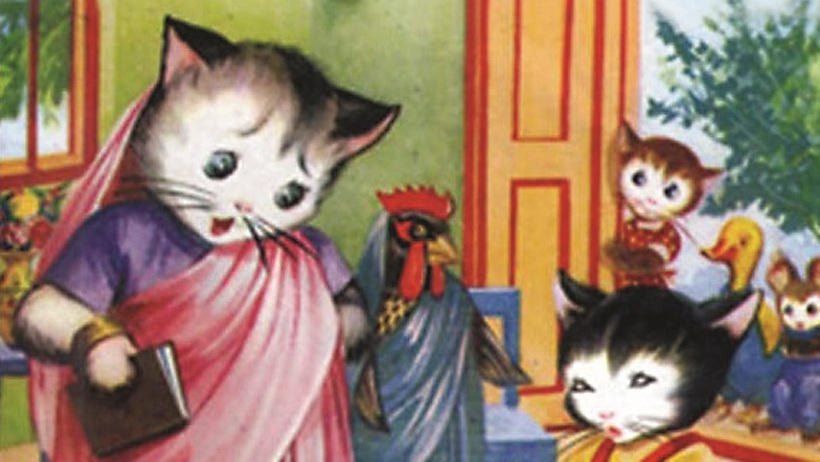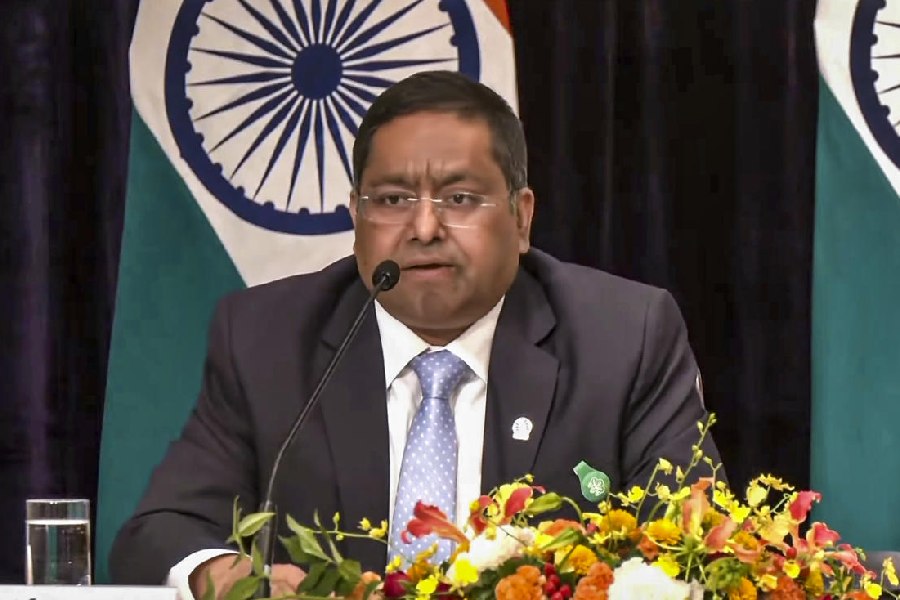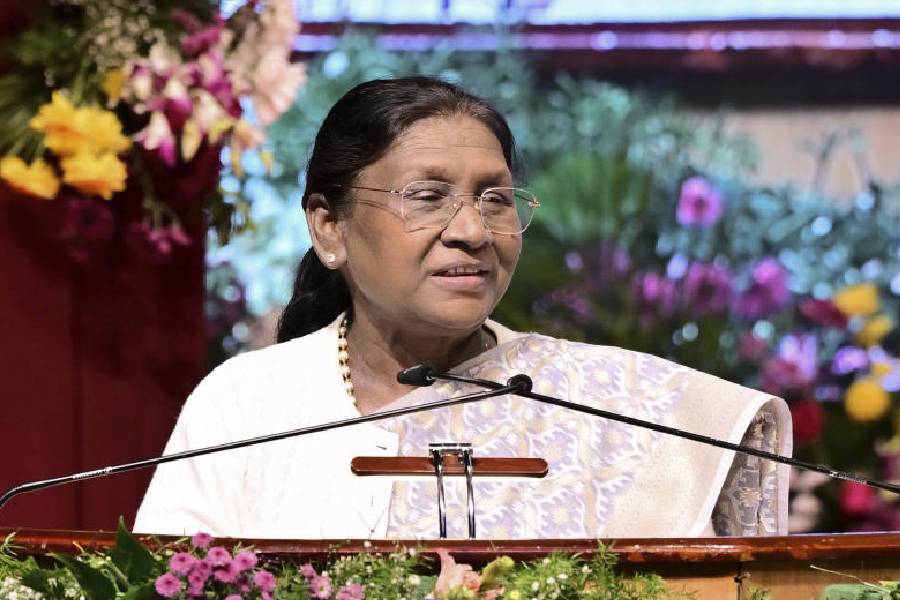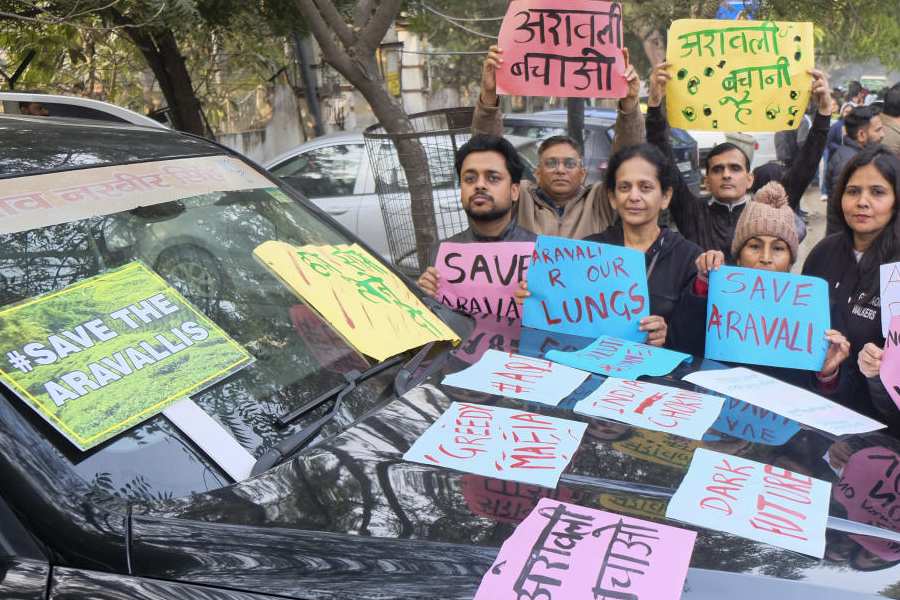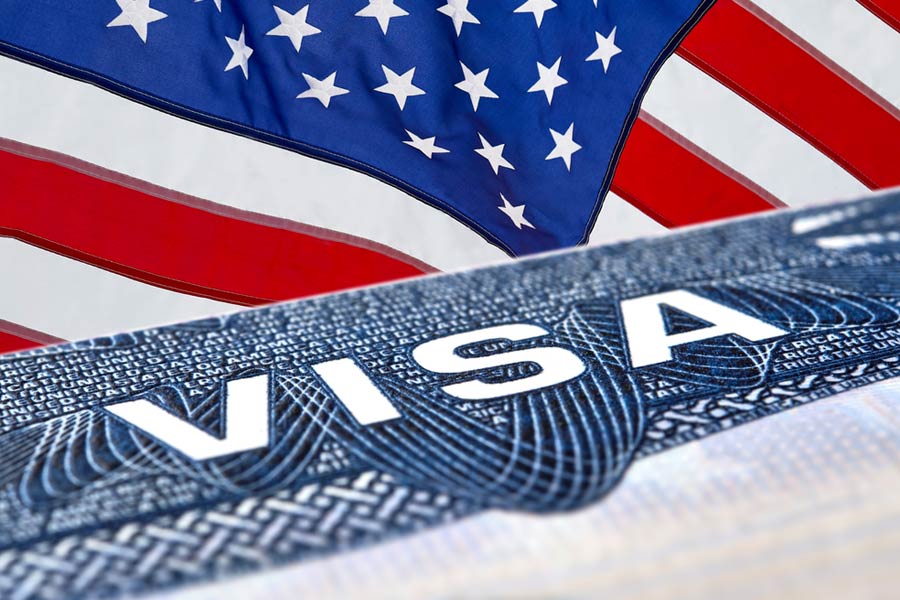Memory is a tricky thing. Most of us, I reckon, tend to fall back on our memories if we’re asked to give an account of who we are, what we do, how we spend our time, what we enjoy or dislike and so on and so forth. Our identities are inextricably tied to our remembrance of past things; yet, even as we use memory to validate an idea or express an opinion, we are often painfully aware of the inconstancy and fallibility of our memories. As someone who spends a disproportionate amount of time reading, thinking about, discussing and, occasionally, writing about books, I am sometimes asked about the first book I remember. The answer is simple: the earliest book I can recollect handling, probably when I was about two years of age, was the gorgeously-illustrated, flimsy paperback, Tutu-Bhutu — recounting the adventures of a kitten dressed in yellow t-shirt and red dungarees (Bhutu) and his black-shorts-and-blue-singlet-wearing friend — the puppy, Tutu. For decades after I first encountered Tutu and Bhutu, as well as the rest of the brilliant cast of supporting characters, I had absolutely no idea who the writer or the illustrator of the book was, but the luminous images still form a part of my mental landscape. I’ve also often wondered if my love of the Bengal countryside wasn’t — at least in part — triggered by the images I had encountered in Tutu-Bhutu as a city-bred child: the ponds, the fishing, the mango grove, the nullah over which the friends build a bridge with planks of wood… Even as I peck these words out on my laptop, I feel the familiar frisson of excitement I had first felt when I had picked up Tutu-Bhutu well over fifty years ago.
But there are strange gaps in my recollections of this beloved book. Family lore has it that I would ‘read’ Tutu-Bhutu by running my index finger along the lines of text and reciting from memory the oft-told tale, which had been read out to me, my brother, and assorted cousins countless times by our patient grandmother. I clearly remember ‘reading’ the last words of the tale, which were “Now we are civilized and educated”, spoken to Bhutu by his saree-clad mother. But these lines occur towards the very beginning of the book, when Bhutu is being scolded for having unexpectedly attacked and injured some chickens in the midst of playing games with them in the village green. When I chanced upon a copy of Tutu-Bhutu some years ago, this discovery came as such a shock that I tried to find out if there had been an earlier edition of the book where these words were, in fact, the concluding lines of the story. There hadn’t been, and they weren’t. I did find out, though, that Tutu-Bhutu had been written and illustrated by the prodigiously talented Dhiren Bal, first published in 1959, and is still in print. My memory of Tutu-Bhutu, therefore, like so many of my memories, is imperfect and full of gaps, but also profoundly important in the narrative that is the story of my life.
We string together memories to create stories — not just our own, but that of our families, our friends, neighbours, communities, the place we live in (or would like to live in), the planet we wish to leave for our children — and we pass on these stories to others we wish to bring around to our way of seeing and understanding the world we inhabit. These stories need not be made up of memories of places, people, things or events we have encountered at first hand. We often take the memory-strings given to us by others and weave them with our own to create new memories, new narratives, new stories, which, we, in turn, pass on to others. If these stories also serve to edify, educate, instruct, paint a moral, or clinch an argument, then they become so much more believable and powerful. The greatest storytellers knew, and know, this. They are able to, as it were, make up memories for us — of things that we know didn’t actually happen to us, yet which we feel we have seen, or heard, or experienced in our own lives. These stories become, often in strange and unexpected ways, part of what goes into the making of that ‘I’ that we typically think of as our unique, authentic self.
What we perhaps need to keep in mind is that when it comes to weaving memories to create stories — whether personal ones, or larger tales involving (many) others — there is, inevitably, an element of selection at play. Such selection may be deliberate, or unconscious, willed, or unwilling. We may ‘lose’ a memory, only to ‘recover’ it at some point in the near or distant future, and it is by no means clear why this should be the case. As the memory scientist, Martin A. Conway, put it in a special issue of The Psychologist (the official monthly journal of The British Psychological Society) devoted to memory and desire, memories “are alive, free, sometimes alien, occasionally dangerous, mental representations that can overwhelm as easily as they fulfill.” Memories, whether our own or those of others, play a powerful part in creating identity. We weave memories together to build the stories that make up the ‘I’ that lives, and moves, and has its being in the world. It is this ‘I’ that not only remembers, but also craves, and anticipates. Memory, as has been long recognized, is twin to desire. In the same essay, Conway writes of how memories can “cause feelings of surprise, recognition, perplexity, even wonderment, and trigger an intense sense of the self in the past”; to which we might add that memories also have the power to trigger an intense desire for something we want to possess now, or in the future. My memory of the idyllic verdant world of Tutu-Bhutu is interfused with my memories of the many happy days I have spent in rural Bengal, reinforcing each other to create a desire to spend more time away from the bustle of the city — and, during this pandemic lockdown, often creating a sense of loss and longing for not being able to do so. In similar fashion, might the recollection of insult and/or injury caused by members of a specific group on members of another become commingled with individual experience to create a hyper-memory which angers, provokes, and spurs action against those deemed to have caused the injuries and insults in the first place. Your — real or imagined, factual or fictional — trauma, and the memories you weave into your tale of woe, can all too easily be passed on to me, leading me to wreak vengeance on an individual, or a group, perceived as the guilty party. Memories, and the stories woven from them, can be used for a variety of purposes — to heal or to harm, to attack or to shelter, to bring together or break apart. Nation-builders and propagandists know this all too well.
The author is professor of Comparative Literature, Jadavpur University, and has been working as a volunteer for a rural development NGO for the last 30 years

